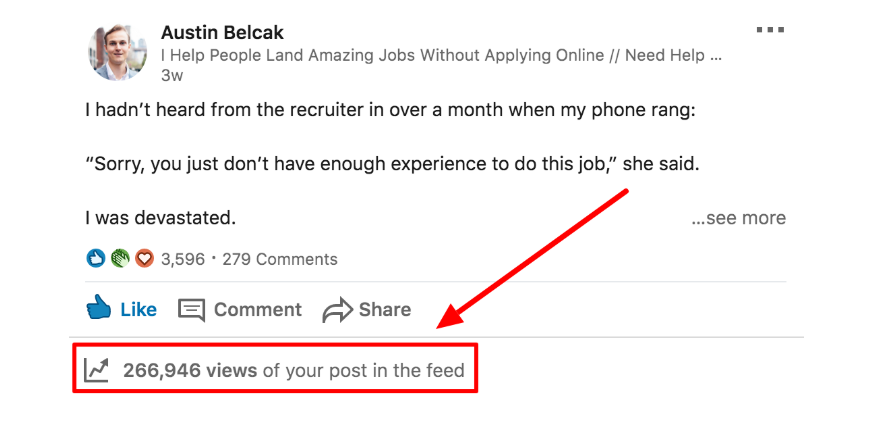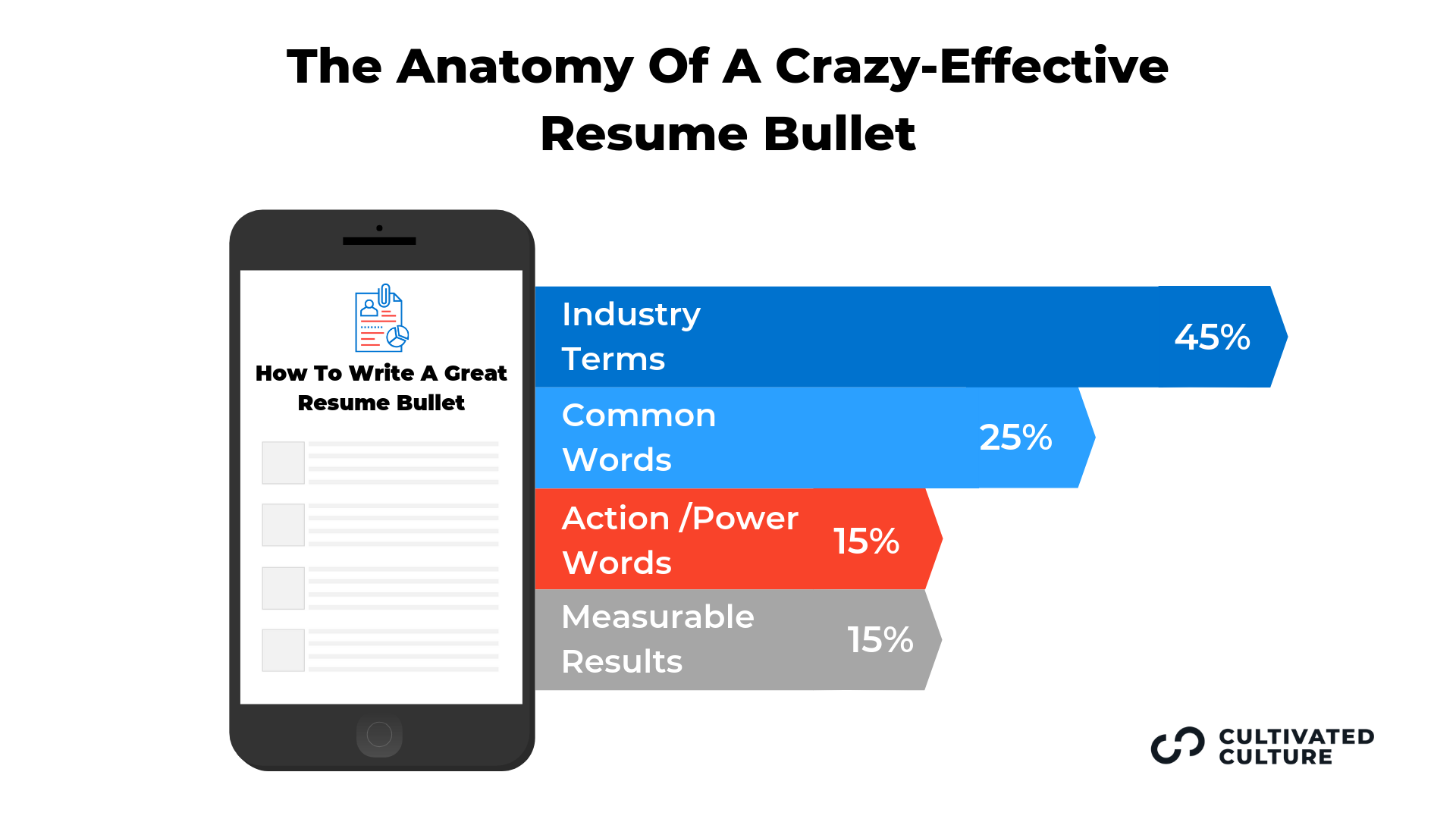How To Write Crazy Effective Resume Bullets
By Austin Belcak (‘13)
Austin is the founder of Cultivated Culture where he helps people use unconventional strategies to lands jobs they love along with salaries they deserve. Most recently, he’s helped people get hired at places like Google, Microsoft, Amazon, Apple, and Facebook.
Most people think that resumes are a summary of their job history, and those people would be very
wrong. Resumes are actually marketing documents focused on selling a single product:
YOU!
Problem is, most people do a terrible job of selling themselves when they create their resume.
They all use the same buzzwords and catchphrases like “results oriented team player” or “passionate growth marketer” that they decided to copy from some online resume template.
At the end of the day, their attempt to “stand out” ends up looking like this:
Breaking News!
Employers have been seeing this for years now and they hate it. If ten people are saying that they “have a track record of exceeding goals” with zero additional context, how are they supposed to differentiate?
If you want to make a great first impression that lands you the job interview, you’re going to have to do more than use some fancy buzzwords. You need to understand the science behind writing compelling resume bullets that immediately illustrate your value and grab the hiring manager’s attention.
The good news is that people have been studying it for the past century and we can piggyback off that knowledge.
Copywriting + Your Resume = More Job Offers
If you haven’t heard of it, there’s a field called copywriting which is basically “the art of rearranging words to make things sell better” (as copywriter Neville Medhora puts it).
More officially, it’s using the combination of language and psychology to drive persuasion and action.
I mentioned that people have been studying it forever, but technology has given us access to a ton of data which has really accelerated the learning process.
Marketers at places like CoSchedule, NeilPatel.com, and BuzzSumo have combed through hundreds of millions of data points to discover exactly what language, format, and tactics lead to the most engagement (and thus, more traffic and more money).
That’s awesome news for us because we can steal their strategies to get the same benefit for our resume!
The Anatomy Of A Highly Effective Resume Bullet
As a marketer, I’ve spent the past 7 years studying and practicing copywriting. I’ve used it to drive millions of people to the Cultivated Culture site and to get millions of views on social media:
After starting Cultivated Culture, I took the copywriting formulas and strategies I learned and began to apply them to people’s resumes. I’ve run split tests across thousands of resumes keeping data on what works and what doesn’t across industries and levels of experience.
When it comes to bang for your buck, the word balance of your resume bullet matters most. Most every word or phrase you’re going to use will fall into one of four buckets:
- Industry-Specific Terms
- Common Words
- Action / Power / Emotional Words
- Measurable Metrics
Combining the marketing data I mentioned above with the split tests I’ve run across thousands of job seekers in my audience, resume bullets that grab the most eyeballs (and land the most interviews) are broken down like this:
This formula is powerful because it allows you to highlight your skill set while attaching real value to your accomplishments — something most job seekers don’t do.
Industry terms allow us to inject the keywords we talked about yesterday, results illustrate the value we bring to the table, and our power words make the whole thing pop off the page. Lets take a look at how this plays out with some real examples:
Putting It All Together (Real Resume Bullet Examples)
For our first example, we have a customer support representative who reworked her company’s ticket triage process to reduce their backlog:
This bullet is a nice length (16 words) and its word balance comes out to:
- 13% Action Words (developed, eliminated)
- 38% Industry Terms (tiered, triage, system, JIRA, ticket, backlog)
- 38% Common Words (that, of, in, less, than, weeks)
- 11% Measurable Metrics (40%, 8)
Our next example is a marketer who leverage customer data to refine targeting on the company’s digital advertising, increasing sales and lowering cost-per-lead:
This bullet is 18 words long and balances out to:
- 17% Action Words (overhauled, comprehensive, shot)
- 39% Uncommon / Industry Related Words (digital, ad, targeting, customer, data, analysis, CPA)
- 33% Common Words (based, on, up, while, dropped, sales)
- 11% Measurable Metrics (37%, 18%)
Both of these examples match our word balance almost perfectly. See how the right information pops off the page and the overall bullet is quick and easy to read?
That’s what we’re going for.
Getting this right isn’t something that’s going to happen overnight. It’s going to take time and practice on your side.
I always recommend breaking things up into small, consistent chunks where you’re doing a little bit of work every day.
In this case, let’s start with one bullet per day. Take the first bullet from the first role on your resume and think about how you can apply this formula to it.
What quantifiable value did you drive? What tools, frameworks, and skills did you use?
Don’t be afraid to fire up a fresh Google Doc and write out a bunch of different iterations of that bullet. The more variations you put out there, the more practice you’ll get, and the easier it will become as you move down your resume.
If you apply this formula to every bullet on your resume, I guarantee you’re going to see a huge upgrade in the value that you drive and the responses you get from your applications!






